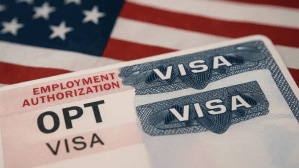Experts believe that tax evasion—when people or companies avoid paying taxes—is a big problem for governments around the world, especially in developing countries. Every year, billions of dollars are lost this way, which affects public services like hospitals, schools, roads, and welfare programs. To solve this issue, AI expert and financial strategist Jeevani Singireddy claims to have come up with a new idea that uses artificial intelligence (AI) to catch tax fraud and improve how tax systems work.
In her research paper, “Optimising Tax Preparation and Filing Services: A Comparative Study of Traditional Methods and AI-Augmented Tax Compliance Frameworks,” Singireddy explains how AI can help make tax systems both fair and efficient. Her plan isn’t just about using computers to speed up tasks—it’s about changing the entire way taxes are collected and monitored, especially in places where the current systems are old and not well-organised.
“Governments have a tough job,” Singireddy says. “They need to make sure people follow tax rules, but they also want to make things easier and cheaper for taxpayers. AI can help do both.”
Her proposed system is called AI-Augmented Tax Compliance (AATC). It combines the flexibility of machine learning (which can learn from data) with the accuracy of rule-based software (which follows tax laws exactly). This smart mix can spot fraud in real time, make decisions quickly, and predict which tax returns might need more attention.
The system is designed to work for everyone—from small businesses and individual taxpayers to large government tax offices. It includes features like:
Behavioral analysis to see how people usually file taxes
Instant feedback to help users fix mistakes before they submit
Natural language processing to make confusing tax language easier to understand
A global study in 2024 found that AI cut the time needed for tax audits in half and improved their accuracy. Another report showed that AI increased the detection of tax fraud from just under 15% in 2021 to over 50% in 2024. The model also helps with everyday tasks like collecting documents, applying deductions, and filling out forms. Her research found that:
Taxpayers and tax professionals saved 40–50% of their time
Companies and government offices reduced their costs by 30–35%
Mistakes were caught and fixed before submission
AI systems became better at spotting odd or suspicious filings
A key feature of the system is a tool called TAICO. It uses a person’s tax data to automatically create tax return documents in Word or Excel format. This makes it easy for even small tax services to offer high-quality help, and it’s friendly for people who aren’t tech-savvy.
“AI isn’t just about doing tasks faster—it’s about learning and improving,” she says. “We need tax systems that grow and change with people’s needs. That’s how we make things fair and transparent,” she said.








